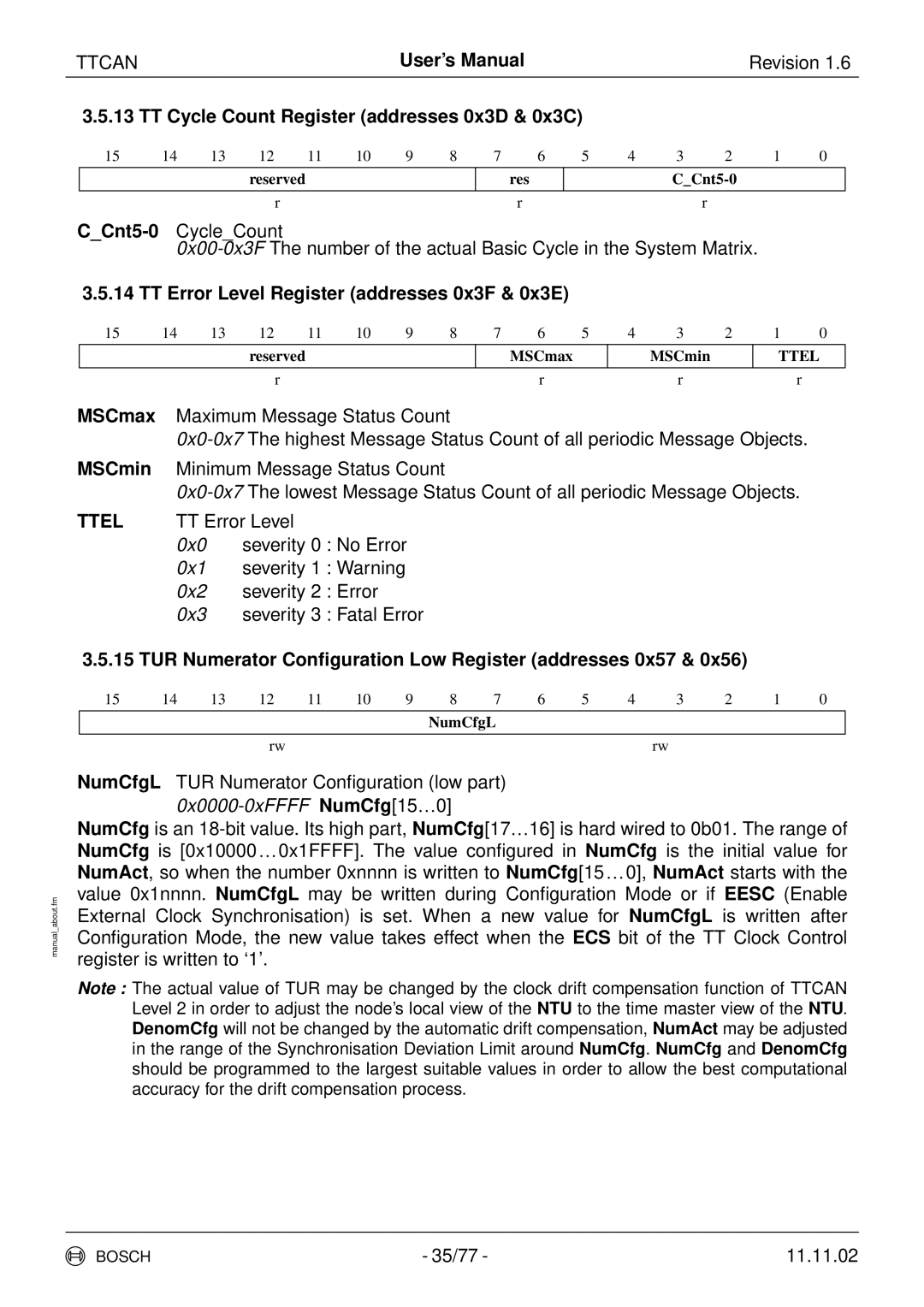
TTCAN | User’s Manual | Revision 1.6 |
manual_about.fm
3.5.13 TT Cycle Count Register (addresses 0x3D & 0x3C)
15 | 14 | 13 | 12 | 11 | 10 | 9 | 8 | 7 | 6 | 5 | 4 | 3 | 2 | 1 | 0 |
|
|
| reserved |
|
|
|
|
| res |
|
|
|
| ||
|
|
|
|
|
|
|
|
|
|
|
|
|
|
|
|
|
|
| r |
|
|
|
|
| r |
|
|
| r |
|
|
3.5.14 TT Error Level Register (addresses 0x3F & 0x3E)
15 | 14 | 13 | 12 | 11 | 10 | 9 | 8 | 7 | 6 | 5 | 4 | 3 | 2 | 1 | 0 |
|
|
| reserved |
|
|
|
|
| MSCmax |
|
| MSCmin |
| TTEL | |
|
|
|
|
|
|
|
|
|
|
|
|
|
|
|
|
|
|
| r |
|
|
|
|
| r |
|
| r |
|
| r |
MSCmax Maximum Message Status Count
MSCmin Minimum Message Status Count
TTEL TT Error Level
0x0 severity 0 : No Error
0x1 severity 1 : Warning
0x2 severity 2 : Error
0x3 severity 3 : Fatal Error
3.5.15 TUR Numerator Configuration Low Register (addresses 0x57 & 0x56)
15 | 14 | 13 | 12 | 11 | 10 | 9 | 8 | 7 | 6 | 5 | 4 | 3 | 2 | 1 | 0 |
|
|
|
|
|
|
| NumCfgL |
|
|
|
|
|
|
| |
|
|
|
|
|
|
|
|
|
|
|
|
|
|
|
|
|
|
| rw |
|
|
|
|
|
|
|
| rw |
|
|
|
NumCfgL TUR Numerator Configuration (low part)
NumCfg is an
Note : The actual value of TUR may be changed by the clock drift compensation function of TTCAN Level 2 in order to adjust the node’s local view of the NTU to the time master view of the NTU. DenomCfg will not be changed by the automatic drift compensation, NumAct may be adjusted in the range of the Synchronisation Deviation Limit around NumCfg. NumCfg and DenomCfg should be programmed to the largest suitable values in order to allow the best computational accuracy for the drift compensation process.
BOSCH | - 35/77 - | 11.11.02 |
